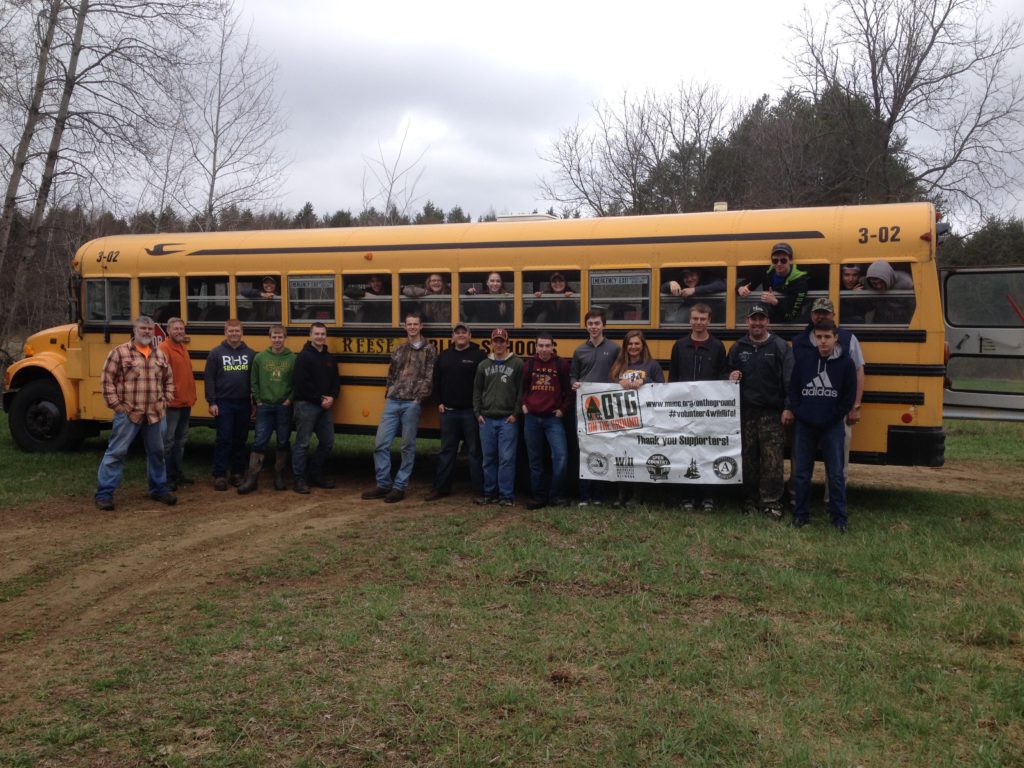
OVER 1,000 VOLUNTEERS HAVE IMPROVED WILDLIFE HABITAT WITH MUCC
Last weekend, seven volunteers improved wildlife habitat in the Barry State Game Area by building four new brush piles for rabbitat. Volunteers cut black locust trees from a stand that is due to be cut as it’s reached its 30-year regeneration cycle. The Barry SGA does not have a sustainable aspen population, so the regeneration of black locust is important for wildlife habitat. This was the first project in the area for MUCC’s Wildlife Habitat Program and there will be more to come. This group also helped MUCC’s volunteer number reach over 1,000 volunteers that have improved wildlife habitat on public land since the program started in 2013!!! Thank you to each and every hunter, angler, trapper, and conservationist that has volunteered their time!
From the program start in 2013 to the current date, more than 1,000 volunteers with MUCC’s Wildlife Habitat Program have helped to complete 61 projects to improve habitat targeted for specific game species on various areas of Michigan’s public land. Many of these projects involve building brush piles to provide cover, planting mast-producing trees and shrubs to provide browse, planting conifers to provide cover, non-commercial tree cutting to promote the regeneration of aspen, oak, and other preferred browse and cover species, and clearing encroaching timber from wildlife openings among other projects.
The sustainability of this program depends on these dedicated volunteers to continue “focusing on projects which improve habitat for game species and sport fish on lands open to the public for hunting and fishing. Through this program, hunters, anglers, and trappers have the opportunity to donate their time for the benefit of the species they pursue, showing the general public that we’re true conservationists while seeing first-hand how their license dollars are put to use. At the same time, non-hunters and new hunters learn about wildlife habitat and the contributions made by hunters, anglers, and trappers for conservation.” Again, thank you to each of the volunteers that have dedicated one or many days to improving wildlife habitat with MUCC.

Just this year, almost 200 volunteers have helped to complete 15 of 20 scheduled habitat projects throughout various regions of the state. The remaining 5 projects for this cycle will be completed by October 1st, 2016; just in time for the opening day of archery season! Keep up to date with opportunities to volunteer and RSVP to get involved with upcoming wildlife habitat improvement projects at www.mucc.org/ontheground. The program has been expanding to new regions including the Barry SGA in Barry County, the Muskegon SGA in Muskegon County, the Haymarsh Lakes SGA in Mecosta County, the Tuscola SGA in Tuscola County, the Petobego SGA in Antrim County, and the Shingleton State Forest in Delta County.

What’s coming up next?
We will be building brush piles for rabbitat by using down trees from recent storms in the area.
- TBD September 2016 Gourdneck State Game Area
We will be building brush piles for rabbitat with Boy Scout Troop 253 out of Vicksburg, MI as one of the scouts’ Eagle Scout project.
—
Click any of the above project links to see more details about the habitat work and RSVP to volunteer. This season’s habitat work is dwindling down as we approach the fall hunting seasons, but there will be plenty more opportunities to get involved! The early winter and spring make for great conditions to build brush piles and improve wildlife habitat without the thick brush, abundant vegetation, and sometimes grueling heat that the summer season brings.









